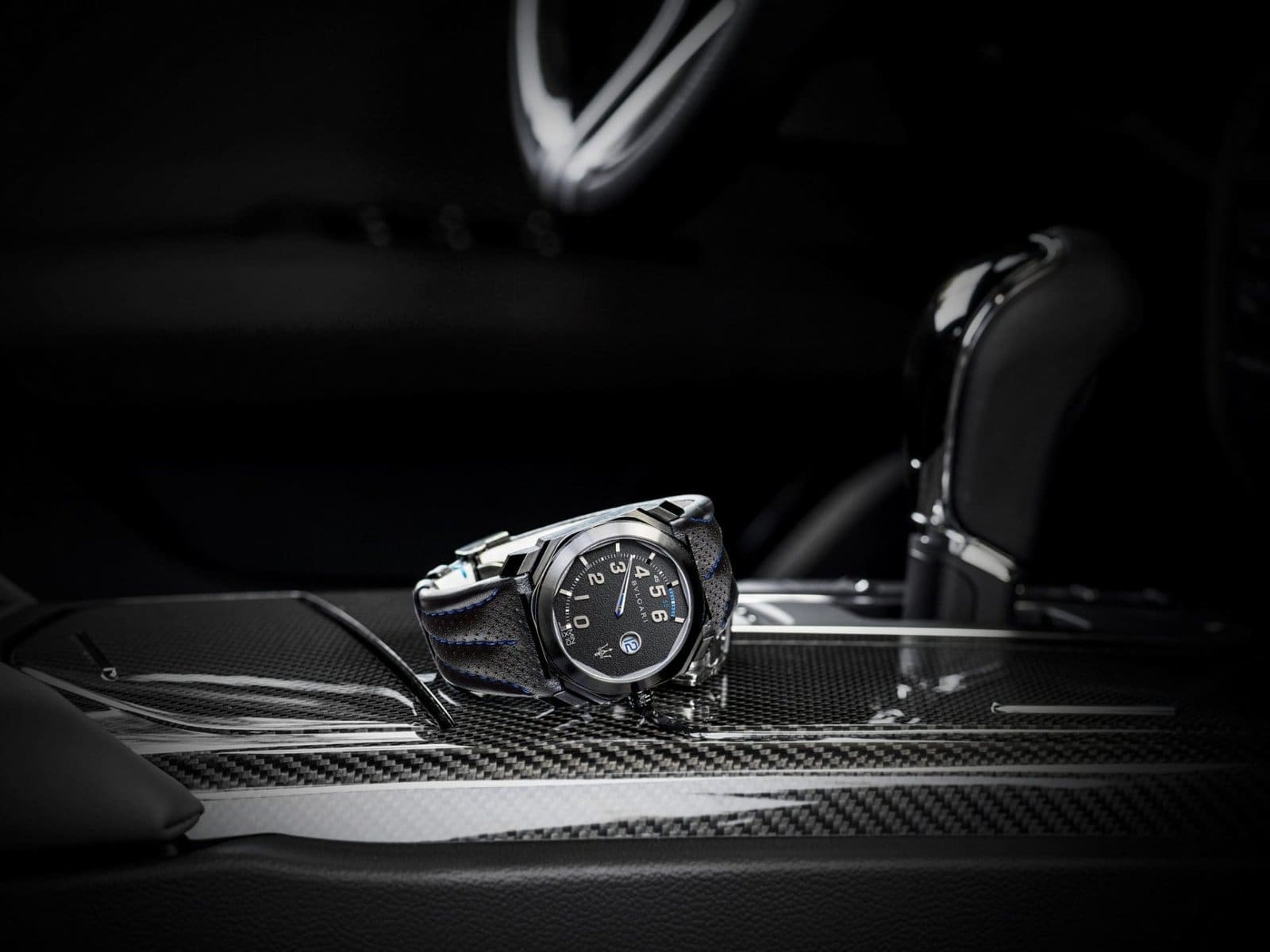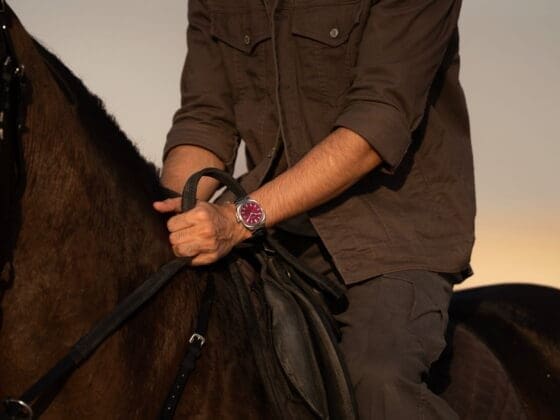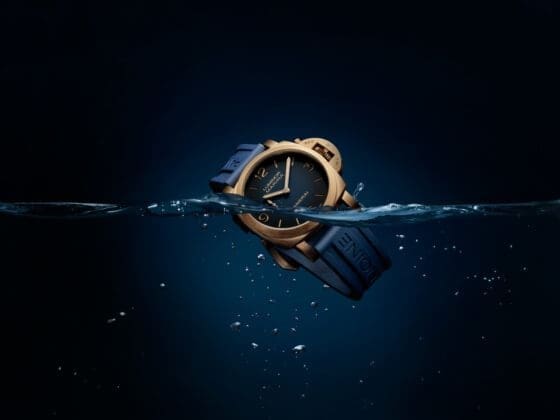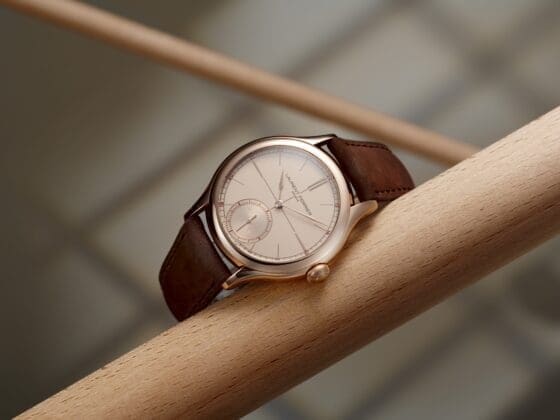I understand that you had learnt at the Institute for Industrial Arts in Rome, what attracted you to watch design in particular?
I love watches; I have a passion for watches. If you don’t, it becomes very difficult to design the entire mechanics in just 42 to 45 mm. During my career, I have designed a lot of things like jewels, cars, motorbikes, shoes, furniture, sunglasses, ball-point pens, etc. It is really important for a designer to understand very well the DNA of the brand and its various categories and you have to understand the technology behind the product.
For example, the technology you have behind cars and watches is completely different. But sometimes we have some elements in common. For example, the clients that love cars, also love watches. They love the mechanical parts of the watches.
Give us a sense of what it’s like to transition from designing other products to watches.
It was not that great a change for me. I make the same type of sketches in the same size of paper for all the products. So, whether I am drawing a car or a watch the size of the paper is the same. The difference is just that when you sketch a watch, it is 20 times bigger than the actual product. So you can sketch a lot of details that you cannot replicate on the real product because it is too small. You just need an idea, a very strong and very clear idea, and you have to then transform these ideas in a way that makes sense with the brand, and with the client of the brand as well.
When you joined Bvlgari, how did you assimilate your ideas with the existing legacy of the brand?
Let me give you an example. When we did Gérald Genta or Daniel Roth, our plan was to develop the Gérald Genta brand. When we designed the Octo in our design office in Rome, our inspiration was a jewellery collection that was introduced in the late 70s or early 80s. In this collection you can find a coin with a round bezel bound within an octagonal shape. This collection is a very important legacy for us because when Gianni Bvlgari asked Gérald Genta to develop the ideas for these products, the designs were made by Gianni Bvlgari himself. So, when we decided to revamp the Gérald Genta brand, the obvious choice was the Octo.
Bulgari watches today are known as much for their technical innovation as for their design. Was this part of the plan?
Yes, this is again a combination of two different worlds. Bvlgari as a brand can bring together Italian design rules and Swiss watchmaking into one because we are an Italian brand, but we have our manufacturing site in Switzerland.
At Bulgari, we have a tradition of using common materials in unusual ways. That’s why when we produced and launched the famous ‘Minute Repeater’ in titanium [Octo Finissimo Répétition Minutes] it had a great wow effect. That’s why this year we combined the most technical components of Swiss watchmaking with the most contemporary, trendy material that we can find today, which is carbon. This is also what happened in the 70s when Bulgari began to experiment with glass-fibre and eventually turned it into a luxury item. At Bulgari, we love to play with pure elements, simple things, but in unconventional ways.
 The Bulgari & Maserati collaboration: How did it come about?
The Bulgari & Maserati collaboration: How did it come about?
Maserati needed a partner in the watchmaking industry, and we needed a partner in the automotive industry. It was because we have similar clients’ profiles and we find that these two brands have a lot of elements in common. Two brands not just driven by performance but also by their passion for beauty. Maserati, after the second world war made fantastic cars, not just in terms of performance but also fantastic cars in terms of style. So too with Bvlgari watches. When you see the ‘Minute Repeater,’ the first reaction you have is wow this watch is fantastic, its super thin and it is a Minute Repeater. There is a layered escalation in appreciation. You have the same reaction to a Maserati car. At first sight, it is a beautiful car, with a very impressive engine, with a very unique heritage and DNA. So when you combine two brands, you can make beautiful products.
How do you approach the design of a product of this nature; what was Maserati’s input?
It is a Bulgari watch made for Maserati. So it speaks the language of the Maserati brand as well as the Bulgari brand. In our third collaborative collection, we have for the first time, the Maserati logo on the dial. Why? Because this time the idea was to recall the dashboard with the retrograde instruments and we had enough space on the dial to put the Maserati trident on it. We used the same font, the same attention to detail you can find on the Maserati dashboard. Of course, we discussed the theme and colour with the design team of Maserati to find the best formula.
Did the idea for a retrograde display come first and then the idea of a dashboard replica or was it the other way around?
When we began we said, we have already done the Octo Quadri-Retro and the Octo Velocissimo chronograph, it doesn’t make sense for us to make a new edition of the same watch. Each time we have to produce a ‘wow’ effect, we must have a new approach. So we decided to use the retrograde movement because the idea was to have a dashboard on the wrist. This is an unusual way to read the time. And thanks to our movements that we produce in-house, we were able to do it.
The Maserati watch is unique for Bvlgari watches, sold only to Maserati owners. What is the thinking going forward for this design concept?
The idea was to give the Maserati owner the opportunity to own a special, limited edition watch. This was the idea at the beginning, but we have some ideas coming from the marketing teams of Maserati and Bvlgari on what is the right way to go forward with the product. We have to be sure we have the right strategy because you can make a beautiful product, but if the strategy behind it is completely wrong, then that would be a pity.
What are the future plans for this collaboration, and for Bvlgari watches?
We will see. We launched this collection last year, and the Maserati people are very happy. Today it is difficult to say, but we will be happy to work with them in the future.
At Bulgari, we will continue to develop our three pillars. At the moment, our manufacturing team can produce fantastic movements. I will try my best to give these movements the best design possible. We will continue to develop the Finissimo and the Octo design. We will see in January in Geneva and after that in Basel.













